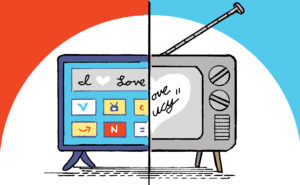 “On TV And Video” is a column exploring opportunities and challenges in programmatic TV and video.
“On TV And Video” is a column exploring opportunities and challenges in programmatic TV and video.
Today’s column is written by Manny Puentes, chief technology officer at Altitude Digital.
The digital advertising industry is moving toward transacting on viewable impressions rather than the rendered impression, also known as the classic CPM.
This is already the reality with many video providers, as big players such as Twitter and Facebook charge advertisers only when their video is viewed for a minimum length of time.
Since the industry is already moving toward transacting on a viewable basis, we need to move beyond assessing viewability post-campaign. We need to do a better job of predicting viewability before ads are ever served. This will reduce overall ad clutter, minimize the number of make-goods and eliminate headaches for both advertisers and publishers.
Video, in particular, offers several unique ways to predict viewability. For example, it’s possible to use player size as the predictor. Research by Google and TubeMogul has shown that player size is actually the most predictive factor for serving a viewable video impression. Google’s research found that the larger the player, the more likely it was to be in view. Players sized 848×477 pixels, the most common large player inventory surveyed, had an 89% viewability rate, and other similarly sized large players had similarly high viewability rates. Medium inventory, typically at least 400×300 pixels, performed positively as well, scoring 67% viewable.
In sharp contrast, small players, which are almost always 300×250, showed a viewability of only 20%. Publishers can use this knowledge to their advantage and focus their efforts primarily around large and medium player inventory, moving away from sidebar video wherever possible. Not only will these placements attract higher CPMs over the long run, but because they have a high probability of being viewable, publishers can minimize the hassle of make-goods with advertisers.
Advertisers too should target large and medium player inventory, where their message is much more likely to be seen and heard.
To predict viewability, it’s important to also understand the historical viewability of impressions. This method tracks the viewability performance of a particular ad placement over time. Once enough sample data is gathered, an algorithm can predict the likelihood that an individual impression will be viewable. This method requires the ability to collect and measure large amounts of data and make predictive calculations quickly. Though this method has limitations on new placements, it has been one of the more popular ways of targeting viewability in programmatic channels.
Finally, it’s possible to measure the viewability of player at time of the ad call. The player can actually be used as a proxy for the video advertisement itself. Since it’s an intermediary between the page and the ad itself, it can be a good “first look” at the likelihood that a video ad will be viewable. If we can understand the viewability of the player at the time of the ad call, we can better understand the likelihood of serving a viewable video impression, and then only serve an ad when it’s likely to be viewed.
Challenges To Come
Of course, the industry still must reach consensus on how video viewability is measured if we are going to accurately predict it. The OpenVV initiative, which is managed by the IAB’s Digital Video Technical Standards Working Group, was a huge step forward in providing a single open source standard. However, the technology has yet to come out with an HTML5 equivalent for measuring viewability; the standard currently only applies to Flash video.
With Google Chrome’s recent Flash-pausing update and the overall shift to HTML5 across the board, a similar open source standard for measuring video viewability in HTML5 will be essential to meet the viewability goals everyone is trying hard to achieve.
As an industry, we need to move beyond debating measurement technologies and percentages and accept that buyers only want to buy viewable impressions. Resisting that push only delays the inevitable, and those who don’t get on board risk now being left behind.
The sooner we can establish clear standards of measuring and predicting viewability, the sooner we can truly move to transacting on viewable CPM.
Follow Manny Puentes (@epuentes), Altitude Digital (@AltitudeDP) and AdExchanger (@adexchanger) on Twitter.












